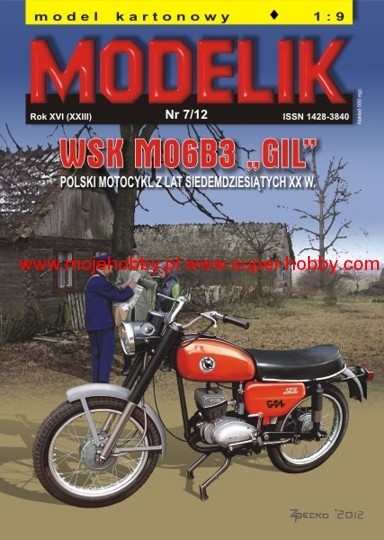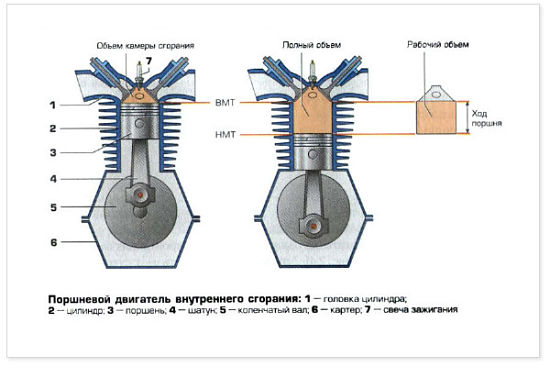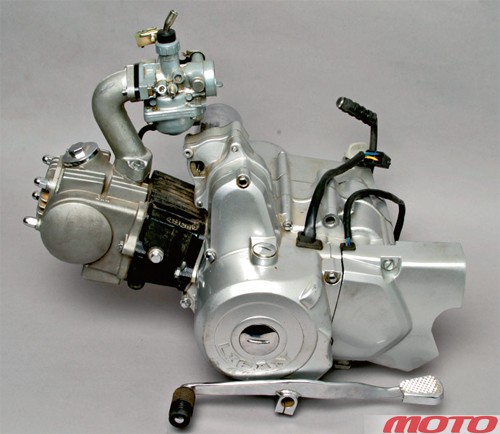
WSK 125 engine – learn more about the M06 motorcycle from Świdnik
Content
- History in a nutshell - what is worth knowing about the WSK 125 motorcycle?
- How many versions of the WSK 125 motorcycle were there?
- WSK 125 engine in the first M06-Z and M06-L models.
- WSK 125 engine in the popular M06 B1. Combustion, ignition, clutch
- WSK 125 motor in M06 B3 motor - technical data. What is the cylinder diameter of the WSK 125?
- What was the WSK motorcycle rated for?
The WSK 125 motor is inextricably linked with the Polish People's Republic. For many drivers who now drive much more powerful vehicles, this two-wheeler was the first step in developing a passion for cars. Find out what the WSK 125 engine is and what are the characteristics of each generation of motors!
History in a nutshell - what is worth knowing about the WSK 125 motorcycle?
Two-wheeled transport is one of the oldest vehicles in the history of the Polish automotive industry. Its production was already in 1955. Work on this model was carried out at the communication equipment factory in Svidnik. The best proof of success was that the manufacturer had a problem getting the car to all the customers who wanted it.. For this reason, the new WSK 125 engine has been a favorite among car enthusiasts.
It is also worth noting that the distribution covered not only Poland, but also other countries of the Eastern Bloc - including the USSR. Almost 20 years after the start of production, the WSK 125 motor left the factory, which is the one millionth copy. The transport equipment plant in Svidnik produced two-wheeled vehicles until 1985.
How many versions of the WSK 125 motorcycle were there?
In total, 13 versions of the motorcycle were created. Most units were produced in WSK M06, M06 B1 and M06 B3 variants. There were respectively 207, 649 and 319 units. The smallest model was produced "Paint" M069 B658 - about 406 two-wheeled vehicles. The motors were marked M06.
WSK 125 engine in the first M06-Z and M06-L models.
It is worth taking a look at the different types of drives used in the WSK 125 motors. One of the first was the one that was installed on the M06-Z and M06-L models, i.e. development of the original M06 design.
The WSK 125 S01-Z engine had an increased rated power - up to 6,2 hp. The air-cooled single-cylinder two-stroke unit had a compression ratio of 6.9. A three-speed gearbox was also used. The tank capacity was 12,5 liters. The designers also installed a 6V alternator, a 3-plate clutch, an oil-bathed plug, as well as magneto ignition and a Bosch 225 (Iskra F70) spark plug.
WSK 125 engine in the popular M06 B1. Combustion, ignition, clutch
In the case of the WSK 125, an air-cooled S 01 Z3A two-stroke unit with a displacement of 123 cm³ and a cylinder diameter of 52 mm with a compression ratio of 6,9 was used. This WSK 125 engine had a power of 7,3 hp. at 5300 rpm and equipped with a G20M carburetor. To operate the machine, it was necessary to refuel it with a mixture of Ethyline 78 and LUX 10 or Mixol S oil, respecting the ratio of 25:1.
The WSK 125 engine had low fuel consumption - 2,8 l / 100 km at a speed of about 60 km / h. The drive could reach speeds of up to 80 km / h. The equipment also included spark ignition - a Bosch 225 spark plug (Iskra F80).
The M06 B1 model also had a 6V 28W alternator and a selenium rectifier. All this was complemented by a three-speed gearbox and a three-plate cork clutch in an oil bath. The mass of the car was 3 kg, and according to the conclusion, its carrying capacity could not exceed 98 kg.
WSK 125 motor in M06 B3 motor - technical data. What is the cylinder diameter of the WSK 125?
The M06 B3 motor was perhaps the most popular model. It is worth noting that several subsequent modifications of the M06 B3 also had additional names. These were two-wheelers named Gil, Lelek Bonka and Lelek's off-road motorcycle. ki Bank. The difference between the two was in the colors used, as well as the style, such as the soft chopper.
The designers from Svidnik decided to use the S01-13A two-stroke air-cooled unit. Its displacement was 123 cm³, the cylinder bore was 52 mm, the piston stroke was 58 mm and the compression ratio was 7,8. He developed a power of 7,3 hp. at 5300 rpm and was also equipped with a G20M2A carburetor. It was distinguished by economical fuel consumption - 2,8 l / 100 km at a speed of 60 km / h and could reach a maximum speed of 80 km / h.
What was the WSK motorcycle rated for?
The advantage was the low price, as well as the stable operation of the motorcycle power unit and the availability of spare parts. This benefited WSK compared to competitors - motors manufactured by WFM. It was common to see a WFM bike leaning against a fence because the components needed to repair the bike could not be found. That's why WSK products have been so popular.
Photo. main: Jacek Halitski via Wikipedia, CC BY-SA 4.0

